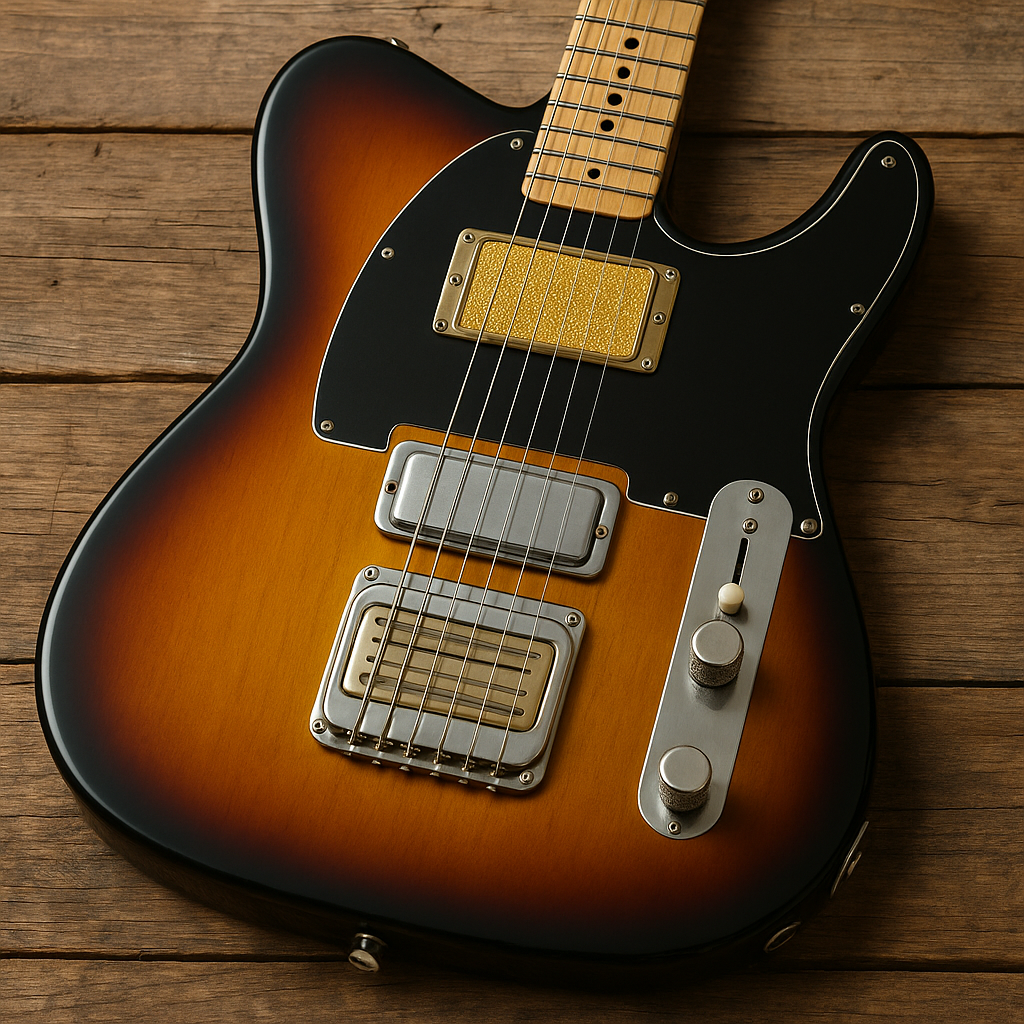In the diverse universe of electric guitar tones, gold foil pickups have carved out a curious niche. With their dazzling appearance, raw-yet-clear voicing, and garage-era legacy, gold foils defy the conventions of more famous pickup designs. Once viewed as budget oddities, they’ve become cult favourites for their idiosyncratic tone and visual charm.
But how did these strange-looking pickups from student-grade guitars wind up on the boards of modern session legends and boutique builders? Let’s trace the surprising story of the gold foil.
Humble Beginnings: Budget Builds with Big Character
Gold foil pickups first gained prominence in the late 1950s and early 1960s, largely through mass-produced instruments aimed at beginners. These guitars were often sold through department stores like Sears, Montgomery Ward, and Western Auto under brand names such as Silvertone, Harmony, Kay, and Airline. Many were manufactured in the U.S., while others came from Japanese companies like Teisco, Guyatone, and Zen-On.
Their goal was simple: build inexpensive instruments that looked cool and stood out on the showroom floor. The gold foil cover—a piece of metallic mesh or crimped metal under a transparent plastic top—was purely decorative but instantly eye-catching.
Beneath the surface, however, things got interesting. The internal designs varied widely, ranging from simple bar magnets with low-output coil windings to more complex designs by makers like Rowe Industries (responsible for many DeArmond-branded pickups). Some were microphonic, some were not; some used rubber magnets, others ceramic. This inconsistency became part of their unpredictable charm.
Tonal Traits of Gold Foil Pickups
Sonically, gold foils occupy a unique space. They tend to deliver:
-
Wide dynamic range – responsive to picking nuance
-
Bright, jangly top end – without harshness
-
Open mids and slightly hollowed lows – especially in semi-hollowbody guitars
-
Touch of microphonic resonance – that adds “air” to the sound
While not high-output, they’re known for their vintage sparkle, clarity, and an almost hi-fi presence—perfect for slide, fingerpicking, or clean ambient work.
Classic Guitars Equipped with Gold Foils
Several iconic mid-century models featured gold foils, either by design or due to later player modifications:
-
Harmony H15 Bobkat / H19 Silhouette – Equipped with DeArmond “mustache” gold foils, great for garage rock grit.
-
Silvertone 1457 / 1448 – Student guitars with built-in amp cases, surprisingly playable with hot-sounding foils.
-
Kay Value Leader / Speed Demon – Featured low-output gold foils with rubber magnets and a smoky tone ideal for blues.
-
Teisco Del Rey ET-200 / ET-440 – Wild shapes and ornate pickguards with foil-covered pickups that sounded better than expected.
-
Airline 59 2P / 3P – Often came with overwound gold foils that sounded fat and glassy.
Many players have also retrofitted vintage gold foils into Telecasters, Jazzmasters, and custom builds to unlock their sonic potential.
Resurrected by Tone Chasers
Although largely overlooked through the ‘70s and ‘80s, the gold foil revival began in earnest in the 1990s and early 2000s—thanks largely to Ry Cooder. His “Coodercaster” famously combined a gold foil in the neck with a lap steel pickup in the bridge. The result: a tone that was both swampy and articulate, making slide guitar lines sing like vocals.
Other notable users include:
-
David Lindley – A slide master who, like Cooder, prized the nuance and sustain of vintage gold foils.
-
Blake Mills – One of the most creative modern guitarists, known for building entire arrangements around the foils’ frequency quirks.
-
Daniel Lanois – The atmospheric producer used gold foils to great effect on ambient guitar textures and deep space tones.
-
Ben Harper – His Weissenborn-meets-gold-foil approach brought unique flavours to both roots and experimental music.
These players weren’t chasing traditional lead guitar tones—they were embracing the quirks and imperfections that made these pickups sound human.
The Modern Gold Foil Revival
The gold foil isn’t just a relic anymore—it’s been reborn. Both major brands and boutique builders now offer modern versions that combine the visual appeal with better construction and noise handling.
Manufacturers embracing gold foils include:
-
Fender – Limited runs of Gold Foil Jazzmasters, Telecasters, and Jazz Basses that combine retro flair with modern playability.
-
Harmony – The modern Harmony company (under BandLab) released the Juno and Silhouette guitars with redesigned gold foils.
-
Novo, Kauer, and Fano Rivolta – Boutique brands crafting premium instruments around foil-inspired designs.
-
Supro – Their rebooted line includes gold foil-equipped models inspired by vintage Airline and Valco guitars.
Aftermarket pickup makers:
-
Lollar Gold Foils – Designed for drop-in compatibility and enhanced performance.
-
Curtis Novak – Offers several variants, including surface-mount and custom shapes.
-
Mojo Pickups, Fralin, and McNelly – Each with their own take on the classic foil tone.
Whether mounted in a chambered offset or paired with fuzz and slapback echo, gold foils offer a distinctly retro-modern voice—bright but full, immediate yet haunting.
Conclusion
Gold foil pickups are a testament to the idea that tone doesn’t have to come from the top shelf. What was once dismissed as “cheap junk” has become a treasured sonic secret among slide players, indie artists, and vintage purists alike.
In an age of hyper-engineered tone chasing, gold foils remain refreshingly imperfect—beautiful, unpredictable, and alive.









